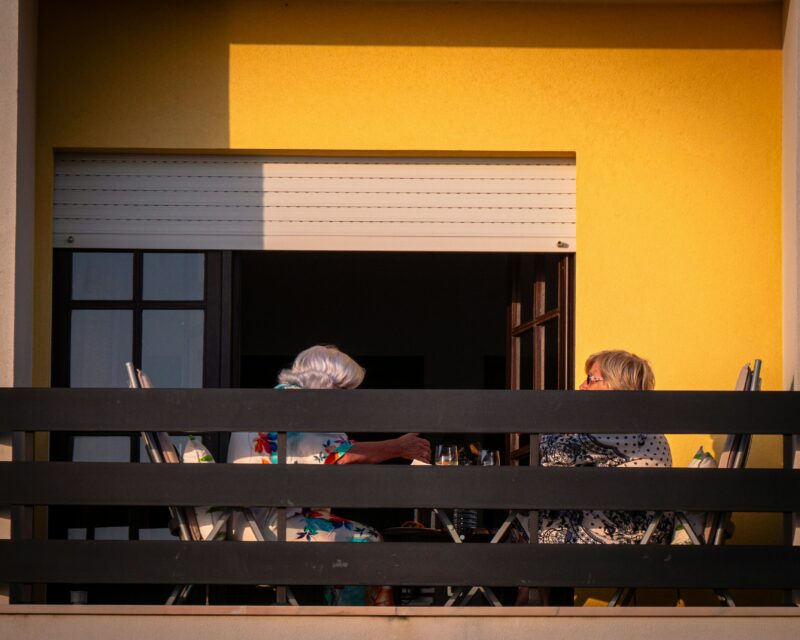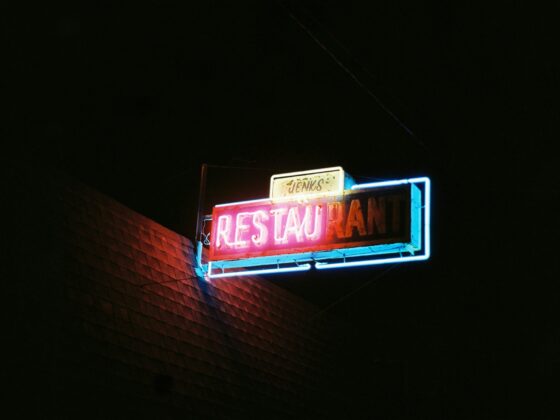The line between bar and kitchen has been blurring for years, as bartenders feature ingredients in cocktails that were once relegated to a chef’s arsenal. The result is drink menus that often read like food menus, but the best examples pull from culinary traditions and evolving tastes, rather than a desire to chase trends.
“What we’re seeing today is the result of a generational shift in the restaurant industry, coupled with the rise of a more elevated casual dining culture,” said Suwincha “Chacha” Singsuwan. She leads the beverage program at Bangkok Supper Club in New York City and was the winner of the Michelin Guide New York 2024 Exceptional Cocktails Award.
“Many of today’s chefs, restauranters, and bartenders grew up viewing cocktails not just as standalone drinks, but as natural companions to food, similar to wine,” Singsuwan added. “This evolving perspective is reshaping the way we think about the dining experience.”
At Bangkok Supper Club, she collaborates closely with executive chef Max Wittawat to create cocktails inspired by the ingredients and even food scraps available at the restaurant.
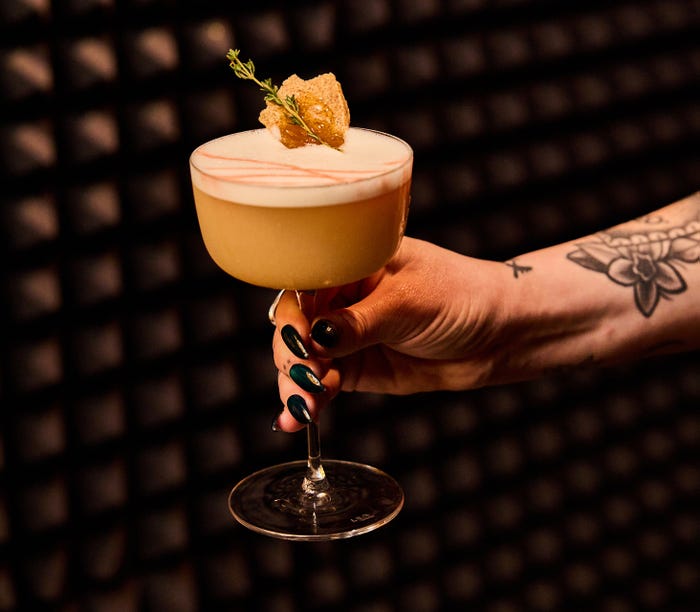
Equipment Room in Austin serves the charcuterie-inspired Lady Marmalade. Photo credit: Jess Attie
“Often, we’ll look to repurpose ingredients or leftovers from the kitchen — both as a creative challenge and as a way to remain thoughtful and sustainable in our approach,” Singsuwan said. With greater access to ingredients that were traditionally reserved for the kitchen, she is able to create savory, umami-forward drinks that are a departure from spirit-heavy styles or the sweet-sour templates of the past.
One example at Bangkok Supper Club is the Fish Sauce cocktail, which features gin, Napa cabbage broth pulled from the kitchen, fish sauce, fresh pear, citrus, and clarified milk. The Beets ‘n’ Cream cocktail calls for beet vodka, mango, honey, citrus, and a cream cheese float.
Down in Texas, curious drinkers can try the Lady Marmalade at Equipment Room, a high-fidelity vinyl bar in Austin that pays homage to Tokyo’s famed listening lounges. It’s like a charcuterie board in a glass, and is made with reposado tequila, calvados, apricot liqueur, peach, thyme, lemon, apricot marmalade, blue cheese, egg white, and bitters.
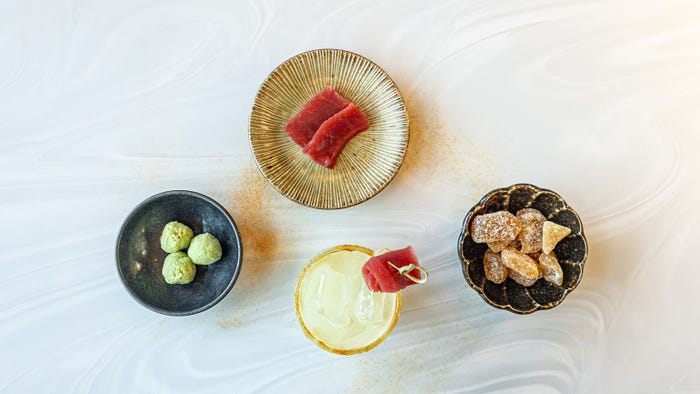
Houston’s Aiko serves the Furusetto cocktail, inspired by the experience of eating sushi. Photo credit: Ana Lavalle
“The drink pulls heavy inspiration from a traditional cheeseboard,” said Robert Bjorn Taylor, who created the cocktail. “These elements add a rich and velvety texture for an exquisite drinking experience. The pectin from the marmalade adds weight and viscosity to the cocktail. The blue cheese has some aromatic funk and extra depth of flavor.” It’s all paired with a house-made peach-thyme syrup to round everything out with a kick of herbal, fruity notes.
“The only thing missing might be some nuts, but don’t worry, I give you a little bite with a cracker and marmalade as a sidecar,” added Taylor.
Apothecary in Dallas changes its cocktail menu regularly, but its current “drinking through the decades” menu includes takes on the Caesar salad and green bean casserole. The latter is made with haricots verts and onion-infused mezcal, shiitake mushroom, cream, lime, parsley, and soda, all topped with crispy onions.
Aiko, a sushi spot in Houston, serves a cocktail called the Furusetto, meaning “full set” in Japanese. It’s made with blanco tequila, wasabi simple syrup, and yuzu juice, and it’s inspired by the experience of eating sushi, explained Aiko chef Patrick Pham. The glass is rimmed with wasabi-soy powder and garnished with candied ginger and a piece of bluefin tuna to complete the dining-like presentation.
Colin Williams, bar manager at Saffron in New Orleans, features Indian culinary practices across the drinks menu. The Fly Like A Ghee-Six cocktail enlists the dhungar method — a South Asian technique that uses hot smoked ghee to infuse food with flavor. In this case, he makes ghee-smoked peach to complement the drink’s bourbon, Aperol, lemon, and star anise.
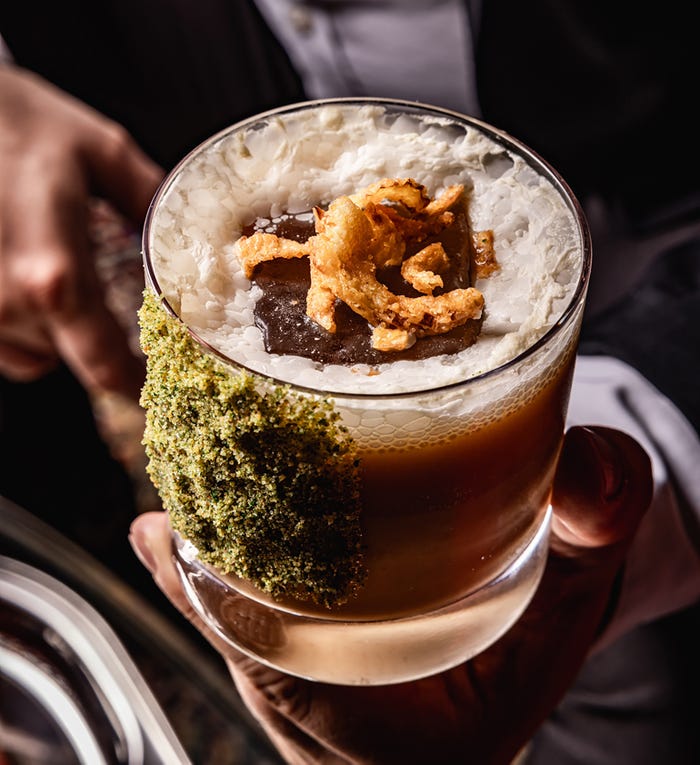
Apothecary in Dallas makes a drink that pays homage to the green bean casserole and is topped with crispy onions. Photo credit: Samantha Marie Photography
There are plenty more examples of culinary cocktails around the country, including at Double Chicken Please in New York City, which has been serving drinks modeled after pizza, Japanese cold noodles, and beet salads since opening its back room in 2021.
Schmuck, newly opened in New York from the team behind a famed Barcelona bar, is serving drinks like the Margarita & Cream, a frozen concoction of rhubarb, strawberry, and salted whipped cream, that’s served with a spoon. Its Bread with Tomatoes cocktail evokes the moment when you reach the end of your salad and drag some bread through the pooling, tomato-y liquid.
These aren’t the pre-Prohibition cocktails that have inspired bartenders for the past century, nor are they the multi-spirit cocktails that dominated the cocktail renaissance of the past two decades. Such drinks are still being served, and classics are steadfast for a reason. But today’s bartenders are finding inspiration in the kitchen and from a variety of new ingredients.
“Today’s cocktails tend to be lighter, more refreshing, and minimalist in structure,” said Bangkok Supper Club’s Singsuwan. “Savory elements, particularly vegetables, add layers of umami and complexity that fruit alone often can’t achieve. This evolution opens the door to more dynamic, nuanced, and food-friendly flavor profiles behind the bar.”
She stressed that, when working with more complex ingredients like vegetables or rendered meat fats, bartenders should take a measured approach by introducing small amounts at first and then carefully adjusting ratios until achieving the desired flavor harmony. But, at the end of the day, there’s still separation between what’s in the glass and what’s on the plate.
“Above all, our goal is to ensure that every drink still tastes like a cocktail, not a dish,” Singsuwan said.

